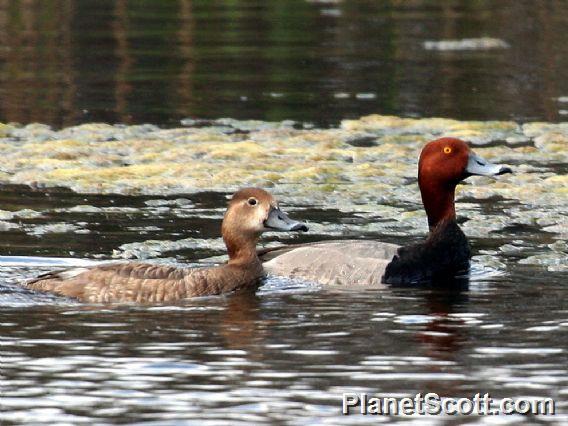Redhead (Aythya americana)


About Redhead (Aythya americana)
- Kingdom: Animals
- Phylum: Chordates
- Class: Birds
- Order: Anseriformes
- Family: Swans, Geese, and Ducks
The redhead is a medium-sized diving duck. The scientific name is derived from Greek aithuia, an unidentified seabird mentioned by authors including Hesychius and Aristotle, and Latin americana, of America. The redhead is 40–56 cm (16–22 in) long with an 74–84 cm (29–33 in) wingspan; the weight ranges from 1,030–1,080 g (36–38 oz), with males weighing an average of 1,080 g (38 oz) and females an average of 1,030 g (36 oz). It belongs to the genus Aythya, together with 11 other described species. The redhead and the common pochard form a sister group which together is sister to the canvasback. This waterfowl is easily distinguished from most other ducks by the male's copper colored head and pale blue bill during the breeding season; from its close relative canvasback it is distinguished by the more rounded head, shorter bill, and yellow, not red, eye. The Eurasian common pochard is even more similar, but very rarely overlaps in range; it also differs in having a red eye, and a more acute, less rounded head shape.
Source: Wikipedia
Trips
No trip reports available.Visits
-
-
2006-04-16
Kern National Wildlife Refuge, United States of America


